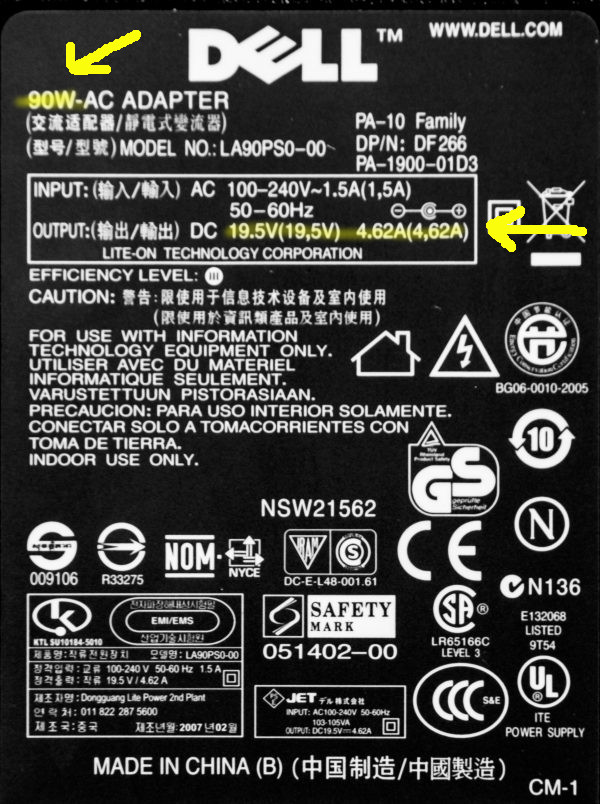User Tools
This is an old revision of the document!
Table of Contents
Charging and powering laptops
Laptops are the most power-hungry of the nomad's communications devices; phones and tablets require much less power.
There are several techniques for successful laptop use on the road.
use a power-sipping laptop
 This advice will likely come too late.
This advice will likely come too late. ![]()
If you don't already own a laptop, consider buying one that uses less power. One crude measure will be the wattage rating of the AC adapter. It really tells us the peak power use but there is usually a relationship between peak and average power.
Sometimes the adapter will give watts on the back label or in the documentation. In the example on the right, this Dell laptop adapter does say it is a 90W charger.
If the label only shows output in volts and amps we can use Ohm's law to calculate watts. In this case, 19v x 4.62A = 87.78W, which is in line with the 90W number on the label.
reduce power consumption
You can't affect how fast the laptop charges, so we will focus on reducing power consumption. Some very easy easy techniques can make a big difference.
screen brightness
One of the easiest and most effective power saving techniques is to reduce screen brightness to a dimmer but still-usable level. After you turn down the brightness the first time you may be surprised at how bright the default setting was. Most laptops have function or alt key combinations to quickly adjust brightness.
This will make the biggest difference on laptops with larger screens.

